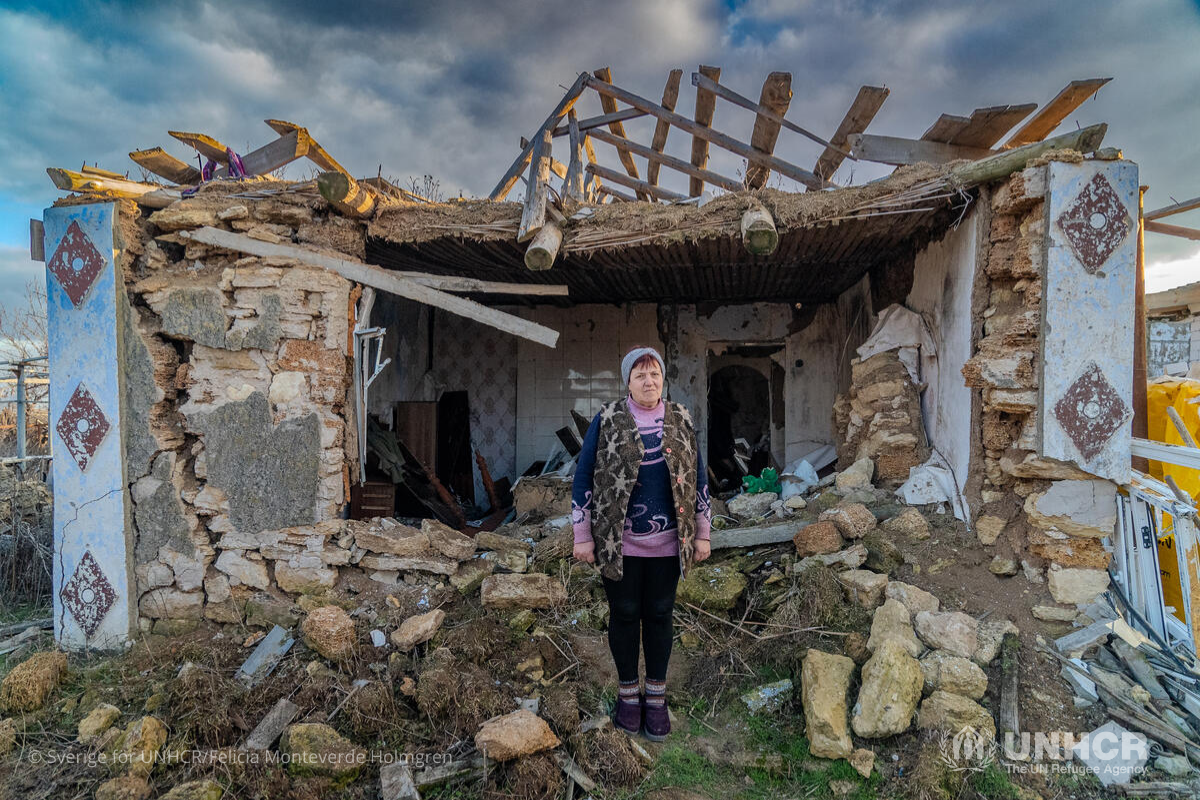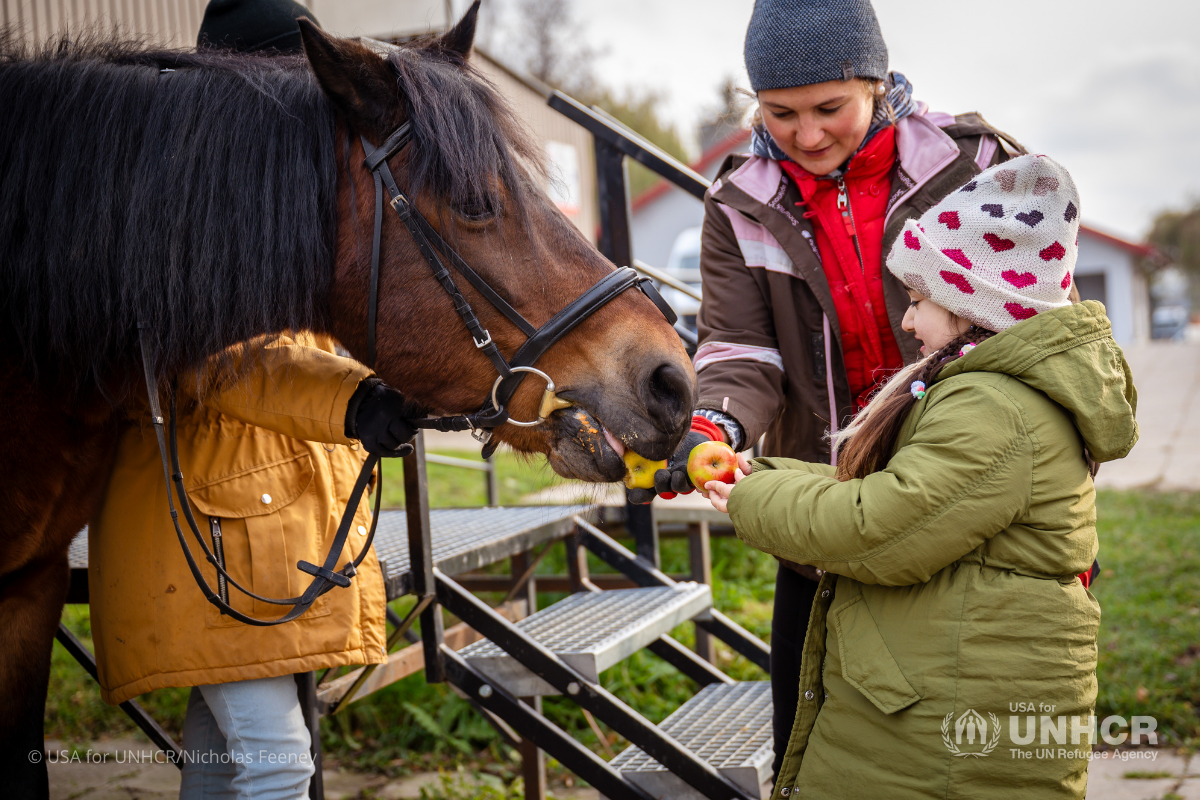Sudan Crisis Explained
On April 15th, 2023, violent clashes erupted between the Sudanese Armed Forces (SAF) and the paramilitary Rapid Support Forces (RSF) in Sudan, resulting in the displacement of more than 11.5 million people, including internally displaced people (IDPs), asylum seekers and refugees. This conflict exacerbated many of Sudan’s existing challenges, including ongoing conflicts, disease outbreaks, economic and political instability and climate emergencies.
Here’s what you need to know about the situation in Sudan, where people are fleeing and how you can help.
When did the crisis in Sudan begin?

Before the current conflict, Sudan had already been grappling with violence and displacement since the onset of the Darfur crisis in 2003. Sudan was home to more than 1 million refugees — the second-highest refugee population in Africa — most of whom were from South Sudan and Northern Ethiopia, with many fleeing conflict in Tigray.
The recent fighting between the SAF and RFS occurred when Sudan was already experiencing its highest levels of humanitarian need in a decade.
The removal of long-time authoritarian leader Omar al-Bashir in 2019 had initially sparked great optimism for a return to civilian rule in Sudan. But, a military coup two years later dissolved the transitional civilian government, triggering political and economic turmoil and reigniting intercommunal conflicts.
Sudan has also been heavily impacted by severe weather events linked to climate change, including floods and droughts. These events have adversely affected hundreds of thousands of individuals throughout the country, leading to crop and livestock destruction and exacerbating food insecurity for families.
Since the recent clashes began on April 15th, the humanitarian situation has deteriorated. In August 2024, the Famine Review Committee officially confirmed famine in the Darfur region of Sudan. This famine impacts some of the most vulnerable people in the country, including internally displaced people living in Zamzam IDP camp. Meanwhile, millions more are at risk of facing famine throughout Sudan.
Half of Sudan’s population – some 25 million people – need humanitarian assistance and protection. The country is facing extreme shortages of food, water, medicine and fuel and more than half the population (25.6 million) are facing acute food insecurity, including 8.5 million of them at emergency levels.
Where are people impacted by the conflict fleeing to?

The lack of basic necessities, combined with violence and uncertainty, has forced many people to flee their homes.
More than one year since the crisis began, more than 11.5 million people have been displaced. This includes more than nearly 8.5 million people displaced within Sudan and 3 million people who fled to neighboring countries.
Egypt is hosting the largest number of Sudanese refugees (1.2 million), followed by Chad (712,288), South Sudan (190,280), Libya (180,000), Uganda (60,808) and Ethiopia (39,984). In South Sudan, most of those arriving are returning nationals (650,000) who had been living in Sudan as refugees.
Without a resolution to the crisis, hundreds of thousands more people will be compelled to flee in search of refuge and basic assistance.
Which groups are vulnerable due to displacement and conflict?

The ongoing humanitarian crisis in Sudan is having a devastating impact on women and children. According to UN estimates, even before fighting broke, more than 3 million women and girls in Sudan were at risk of gender-based violence, including intimate-partner violence.
“Our teams in the region describe horrific ordeals being faced by forcibly displaced women and girls when fleeing Sudan,” says Filippo Grandi, UN High Commissioner for Refugees. “This shocking array of human rights violations must stop. Help to support survivors and those at risk is urgent, but so far, funding is falling extremely short.”
Attacks on healthcare facilities, equipment and workers are further depriving women and girls of lifesaving care, with pregnant women hardest hit, according to the World Health Organization and UNFPA. Nearly three quarters of health facilities are out of service and diseases including cholera, measles and malaria are spreading at a time when two thirds of the population lack access to health care.
According to UNICEF, the UN agency for children, Sudan is the world’s largest child displacement crisis. The conflict has deprived millions of Sudanese children of an education, with more than 90 percent of the country's 19 million school-age children having no access to formal education.
What is the UNHCR, the UN Refugee Agency, doing to help those displaced by the conflict?

UNHCR emergency teams are tirelessly working with authorities, partners and other UN agencies to provide support to newcomers, establish transit centers for rest and access to essential protection services, and distribute emergency supplies such as blankets, soap and mosquito nets.
Inside Sudan, UNHCR is assisting both refugees and internally displaced people with shelter, non-food items and protection, as the security situation allows. UNHCR is also supporting education programming for children who have been displaced.
How you can help …
UNHCR is urgently calling on the international community for funding to respond to the mounting crisis.
“The needs are vast, and the challenges are numerous,” says Raouf Mazou, UNHCR’s Assistant High Commissioner for Operations. “If the crisis continues, peace and stability across the region could be at stake.”
Your support can make a world of difference to those who have been forced to flee their homes due to conflict in Sudan. By becoming a monthly donor, you can help ensure vital lifesaving aid, protection, and hope are delivered to those in need.


